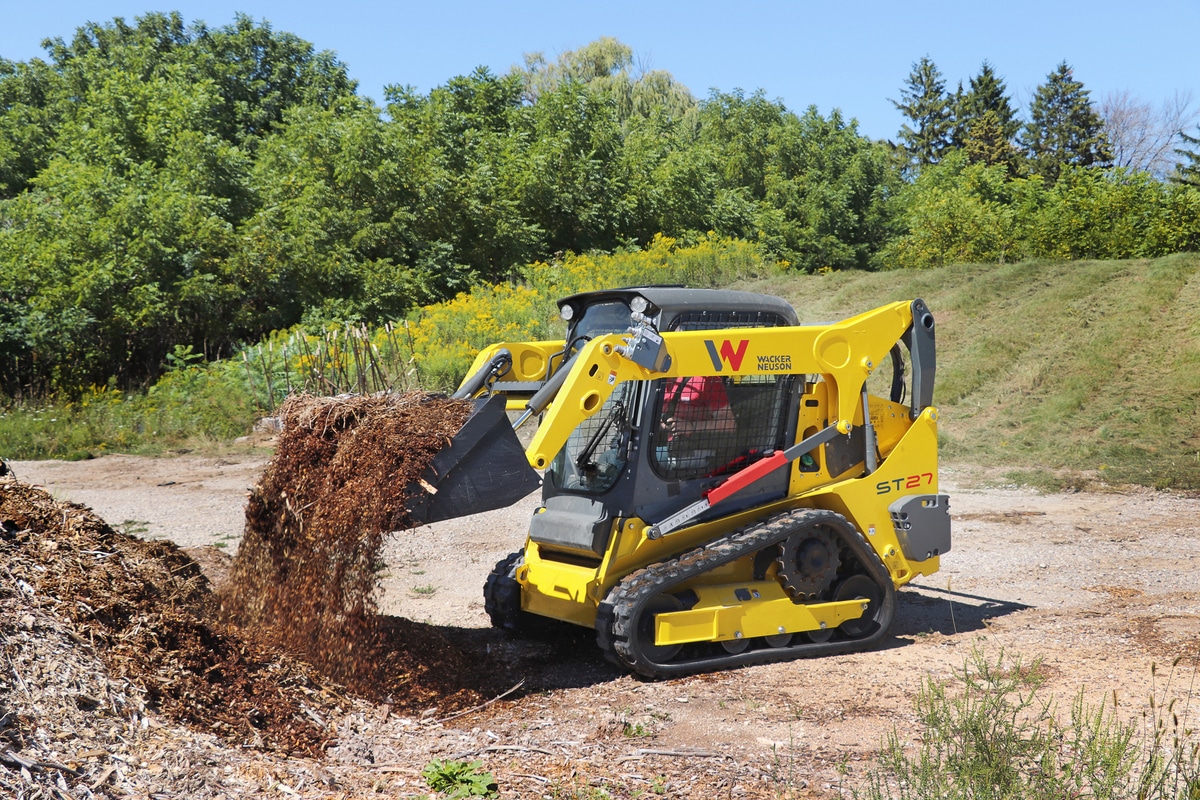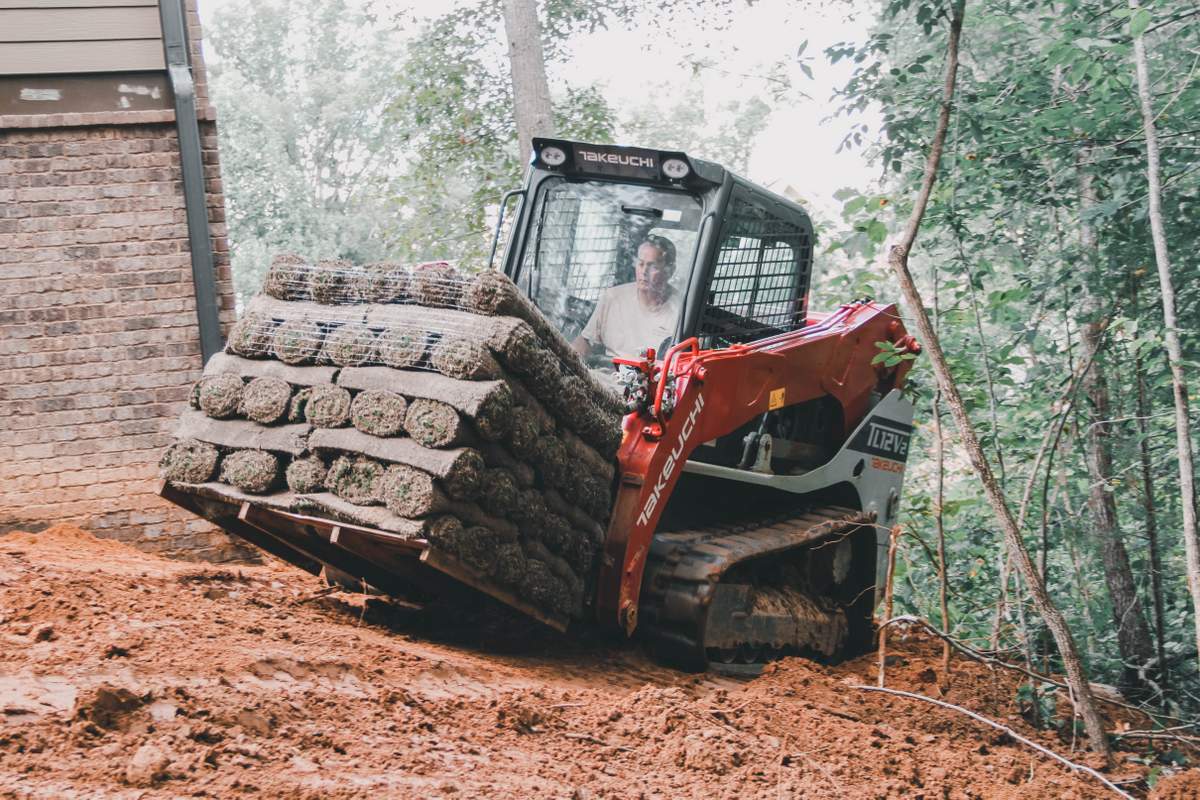Pick Your Size: Scope Out the Largest and Smallest Track Loaders in the Market Today

Compact track loaders are cool machines. We cover them a lot here at Compact Equipment and for good reason. Equipped with a dedicated track undercarriage and usually rubber tracks, these machines can traverse slippery inclines and delicate work surfaces with ease. Throw in available auxiliary hydraulics, countless attachment options and advanced machine controls, and CTL operators have a machine designed to navigate a wide range of applications. While CTLs are versatile and productive workhorses, they may not be a one-size-fits-all-jobs solution. Some operators need a bigger CTL to tackle demanding, high-powered work like brush cutting, while others need a smaller machine to access backyards for landscaping. Either way, manufacturers offer a range of sizes to meet any customer’s needs.
“At John Deere, we are seeing an abundance of activity among our entire lineup of small, medium and large frame compact track loaders,” says Luke Gribble, solutions marketing manager at John Deere. “When looking at the broader CTL market, the trend continues to go towards customers buying larger machines. This doesn’t necessarily mean the entire market is shifting to one size class, but rather customers who historically needed machines in our small frame size class [317G] may now be looking to go up to our midframe model [325G]. The same is true for historic mid-frame model customers [325G] now looking to move up into the large frame CTL category with our 331G or 333G machines. Despite the increasing popularity of our large-frame models, our small- and mid-frame machines still have a place in this market, as they offer many benefits including easier transportability than the larger models and enhanced maneuverability on even the tightest of jobsite locations.”
Size Up
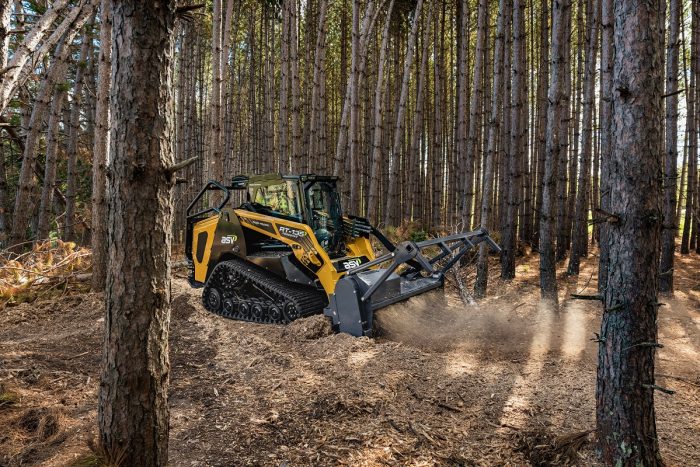
The demand for larger CTLs has been a trend for some time and operators enjoy the power and versatility these bigger machines provide. The larger models offer higher rated operating capacities for lifting and handling heavy loads, as well as higher auxiliary flows for bigger attachments.
“Many customers are looking to the larger, high-horsepower CTLs to deliver high performance and productivity when paired with high performance hydro-mechanical attachments,” says Kevin Coleman, senior product application specialist at Caterpillar. “The larger, more powerful CTLs deliver a machine and attachment combination designed to bring unparalleled speed and quality when paired with tools such as mulching heads or cold planers/milling heads. One high production attachment application would include use of a mulching head to deliver high-performance cutting and mulching in land clearing applications such as clearing right-of-ways, fire lanes or general vegetation management.”
Brush cutting has been a huge application for these larger machines, and manufacturers are adapting their CTLs for the strenuous work. Want to know more about these specific brush cutting CTLs? Click here.
Size Down
Not all jobsites can accommodate big machines, so smaller CTLs are most useful in tight spaces where larger ones simply cannot fit (think backyards, sidewalks and in between homes). These smaller machines can also be an ideal upgrade from walk-behind or stand-on loaders, offering a safer and comfier ride.
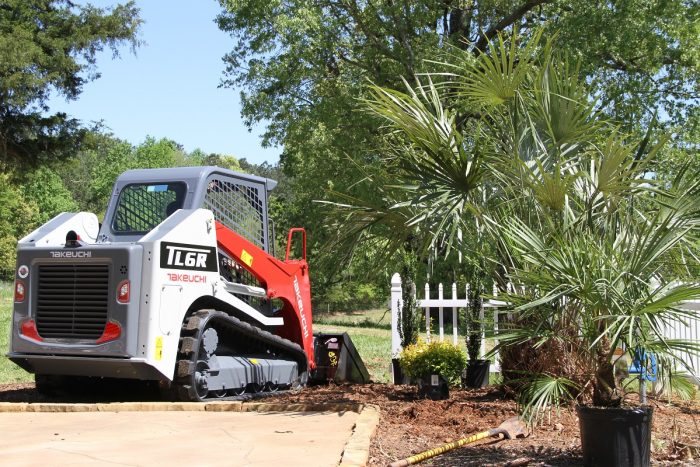
“Smaller CTLs are great for landscaping projects like stump removal, fence installation or installing a retaining wall,” says Lee Padgett, product manager, Takeuchi-US. “They can also be used to trench for irrigation systems or landscape lighting. Landscape professionals can benefit greatly from these smaller CTLs for all those applications, particularly those who do much of their work in backyards or other fenced areas. Their low ground pressure also makes them ideal for work on soft surfaces, and they offer greater comfort than some of the other stand-on or walk-behind machines that could be used in these applications.”
Other advantages of the smaller machines include price (they’re less expensive than larger CTLs) and ease of transport. Padgett adds that smaller CTLs are simpler to load onto a trailer and transport from jobsite to jobsite using a half-ton truck and trailer than larger machines. Rental is a great market for these smaller units too.
Supersized: Check Out Case and New Holland’s Largest CTLs
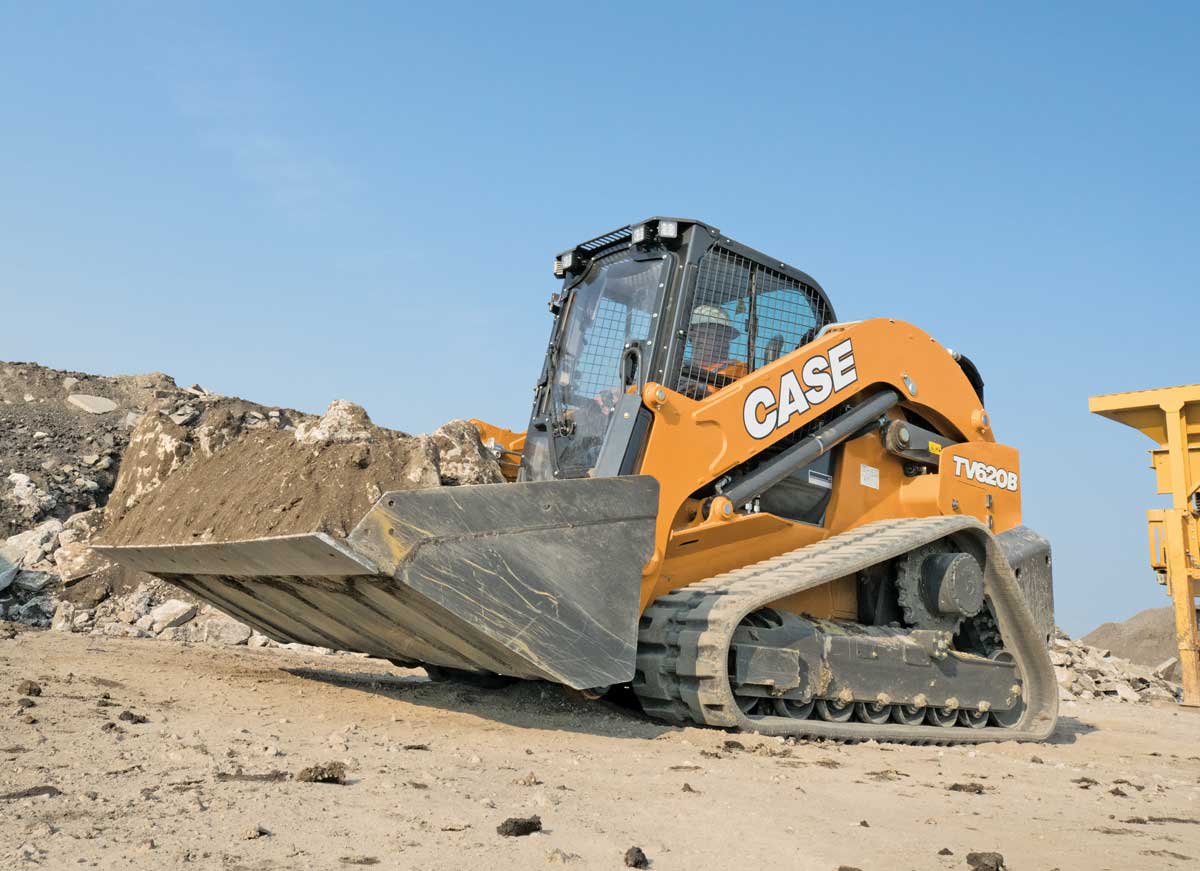
Last year, Case Construction Equipment and sister company New Holland Construction introduced the TV620B and C362 compact track loaders, the largest and most powerful models in their lineups. The specs are the same for each brand — a 114-hp, 6,200-lb rated operating capacity CTL delivering best-in-class breakout forces — stuffed with loads of standard features (adjustable electro-hydraulic controls, high-flow hydraulics, auto ride control, one-way self-leveling, hydraulic coupler, auto-reversing fan, LED lights and a one-year subscription to SiteWatch telematics). The TV620B and C362 offer a selection of buckets, including an industry-exclusive heavy-duty, 84-in., 1.25-cu-yd bucket with SmartFit teeth, and are specifically designed for use with other heavy-duty attachments such as mulching heads, cold planers and the all-new Case grading blade. Both units feature standard automatic ride control with adjustable speed settings, which engages ride control immediately when the CTL hits a pre-specified speed. This feature is enabled and disabled simply within the multi-function display in the machine.
Largest to Smallest
Compact track loader manufacturers understand that different sized machines are needed for different operators. Let’s look at the largest and smallest machines from four companies.
ASV
In December 2021, ASV introduced its RT-135 and RT-135F forestry variant, the largest models in the company’s extensive CTL lineup. Both units feature an industry-leading 132-hp Cummins diesel engine and 50-gpm maximum auxiliary flow. The RT-135 and 135F can power high-flow implements like brush cutters, asphalt planers and trenchers, thanks to an oversized auxiliary pump that’s capable of 66 gpm. A new 52-gal fuel tank also keeps operators working longer.
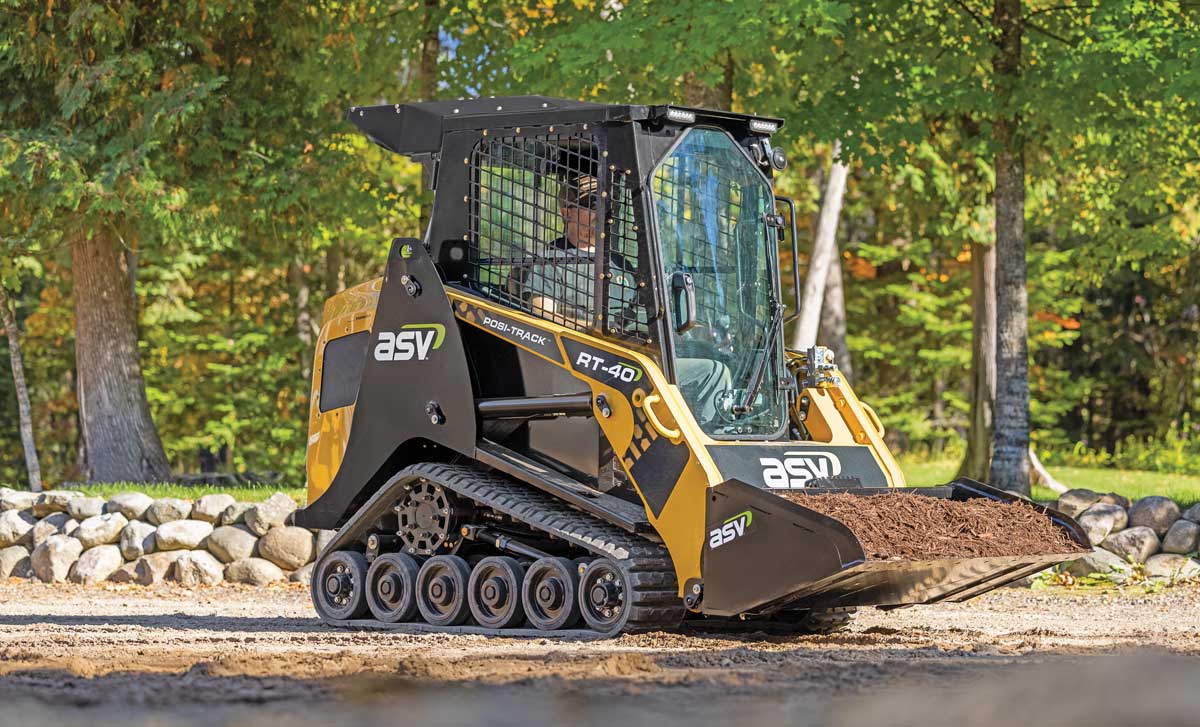
“As you get into larger attachments like mulchers and brush cutters, people are seeking out machines with higher flow,” says Buck Storlie, product manager at ASV Holdings Inc. “We’re seeing a lot of demand for our RT-135F in forestry applications, as well as in highway or asphalt repair where a compact track loader with the right power and flow combination can replace larger machinery. CTLs are easier to transport, and operators can complete the work with the smaller equipment rather than bringing in bigger, dedicated machines.”
ASV’s smallest CTLs — the RT-25 and RT-40 — are both 48-in. wide machines and ideal for maneuvering in tight spaces. Storlie says the 25-hp RT-25 and 40-hp RT-40 are well received because of their compact size and by operators working in housing developments where low ground pressure and a narrow build are important.
Takeuchi
Takeuchi’s largest CTL is the vertical-lift TL12V2. It features a spacious cab with a smooth, low-effort overhead door design for improved entry and egress. The TL12V2’s quiet-ride track design with flotation pads reduces vibration, noise levels and improves ride quality. Inside the operator’s station there’s a color, multi-information display, convenient rocker switches to control a wide range of functions and an updated undercarriage design that enhances operator comfort by reducing vibration and noise levels.
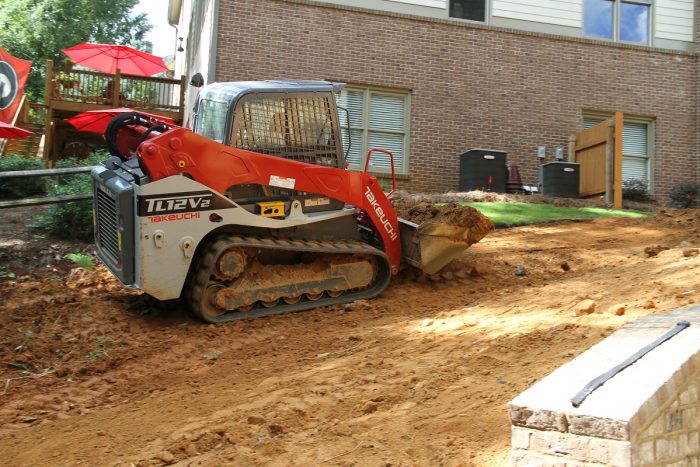
“A powerful, 111-hp EPA Final Tier 4 emissions compliant engine delivers outstanding power and torque for top performance in demanding applications,” says Padgett. “Performance features include massive loader arms, oversized lift cylinders and pins, rear bumper with integrated tie downs, a high-capacity cooling module and LED lights on the front and rear of the machine. A deluxe high back suspension seat offers more comfort for those long hours on the jobsite.”
The company’s TL6R model is its smallest at 6 ft, 5.8 in. high and a little over 5 ft wide. Padgett says the machine’s size makes it popular, allowing operators to work in confined areas while still having great pushing power and ROC. The TL6R is a radial-lift unit and is powered by a Tier 4 Final, emissions compliant 65-hp engine. Other notable features include a bucket breakout force of 5,930 lbs, a traction force of over 8,650 lbs and a newly designed cab.
Need a Small CTL? Consider Kubota’s SVL65-2
The SVL65-2 is Kubota’s lightest and most maneuverable compact track loader yet and is positioned in a lighter ROC weight class than its predecessors. The SVL65-2 features an advanced multi-function valve, slide-up overhead front door and easy on/off self-leveling function. It also features an Advanced Multifunction Valve (AMV) that provides smooth operation when using simultaneous functions, such as auxiliary, boom and bucket circuits, allowing operators to get the job done faster. The SVL65-2 boasts a wide working range including a rated operating capacity of 2,100 lbs at 35 percent or 3,000 lbs at 50 percent, a reach of 34.9 in. and a hinge pin height of 118.5 in.
John Deere
The largest model in John Deere’s CTL lineup is the 333G compact track loader. While this machine has many features that enhance operator comfort and productivity (like an optional anti-vibration undercarriage system and increased bucket breakout forces), the most exciting is the addition of SmartGrade capabilities.
“The SmartGrade 333G compact track loader is the industry’s first fully integrated 3D grade control solution on a compact track loader,” says Gribble. “This solution installs and integrates precision 3D grade control technology at the factory while maintaining the existing versatility and productivity capabilities of our existing 333G CTL. The factory integrated solution also leverages key features like our newly designed dozer blade attachment, EZ Grade software, Dozer Mode and factory calibration all of which assist in the overall ease of operation of the machine and help ensure that you are productively and accurately hitting grade every pass, specifically getting accuracy to within one tenth of an inch.”
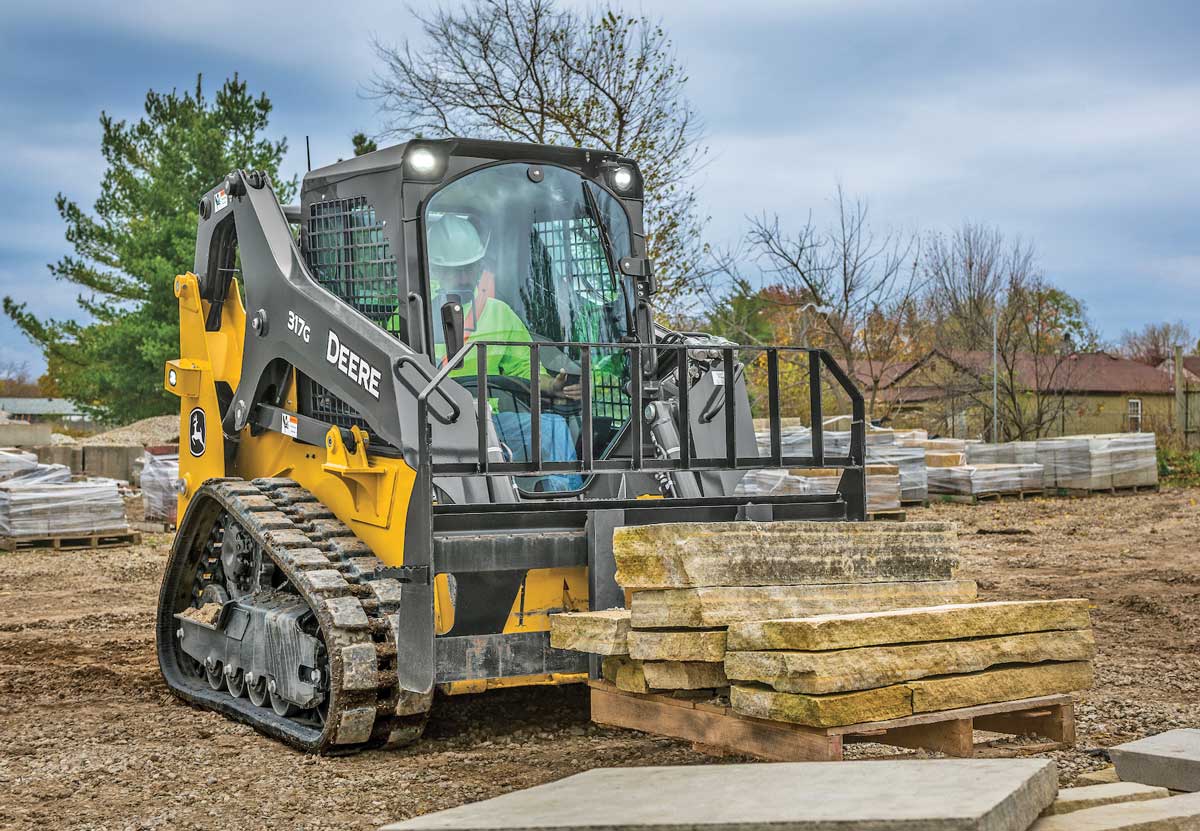
On the other end of the size spectrum, you have Deere’s 317G compact track loader. This model is perfect for rental houses with operators of all skill levels, thanks to its simple, intuitive and smooth controls. Gribble points out that the 317G provides outstanding visibility to the bucket, sides and rear, helping renters see more and concentrate on the job. The machine’s vertical-lift boom design is also great for truck loading and offers the dump height and reach of a much larger machine.
Caterpillar
The 299D3 and 299D3 XE are the two biggest CTLs in Caterpillar’s line. Both models are built on the same chassis and are powered by an electronically controlled 3.8-liter engine, which produces 98 gross hp for the 299D3 and 110 gross hp for the 299D3 XE. Coleman points out that the 299D3 XE is equipped with a high performance auxiliary hydraulic system that produces up to 40 gpm of flow and up to 4,061 psi of pressure to handle even the most demanding hydraulic attachments. Caterpillar also offers the purpose-built 299D3 XE Land Management CTL which is designed to excel in demanding vegetation-management applications, such as mulching, brush cutting, vegetation control and mowing.
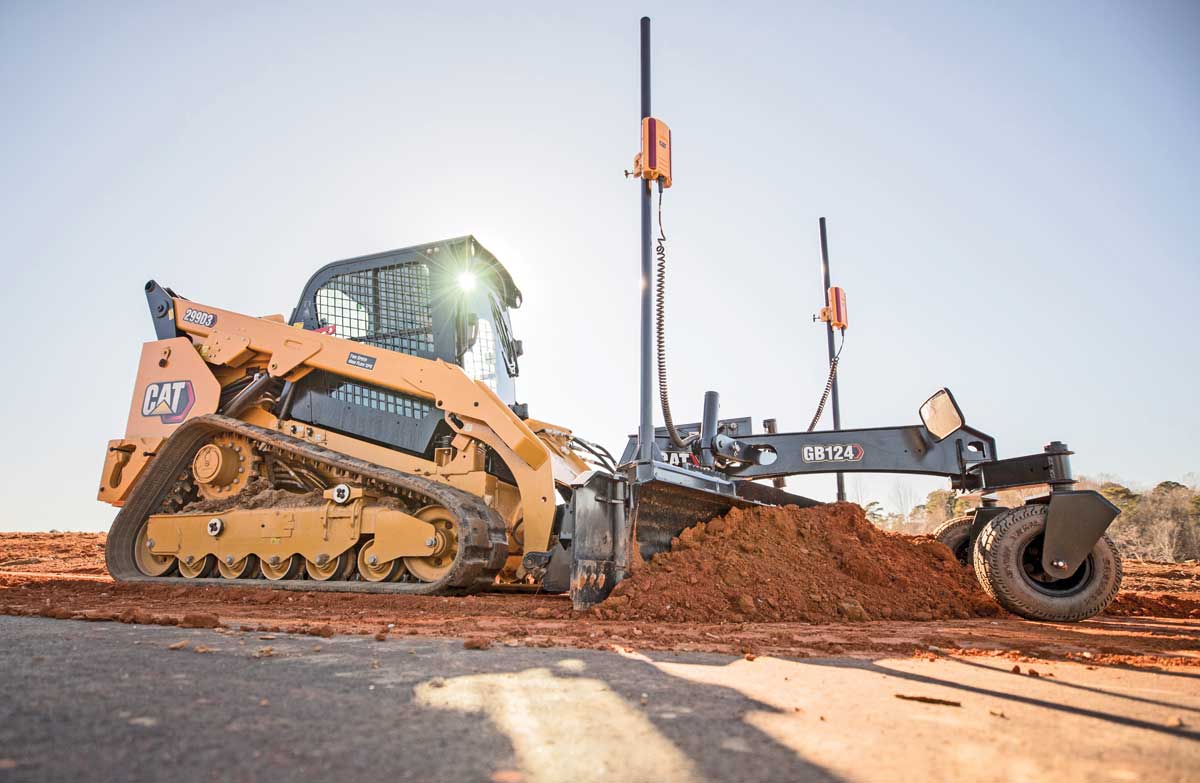
Cat’s smallest CTLs, the 239D3 and 249D3, both incorporate all the design and technology innovations as the company’s larger machines, including a sealed/pressurized cab, electro-hydraulic controls, premium seat choices, Smart Technology and optional Advanced Display with rear-view camera. While many manufacturers have committed to vertical-lift arm designs for their models, the 239D3 and 249D3 allow customers to choose the lift linkage style that best suits their application needs.
“The radial-lift 239D3 provides a compact and simple linkage design that provides good reach at mid-lift height and good performance in many applications — digging, dozing and/or finishing grading/back-filling,” says Coleman. “The 249D3’s vertical-lift design provides additional value with higher lifting heights and extended reach at the top portion of the lift cycle, while preserving the excellent mid-lift reach found with radial-lift machines. Material handling, truck loading, digging and stock piling are just a few applications where a vertical-lift linkage excels.”


